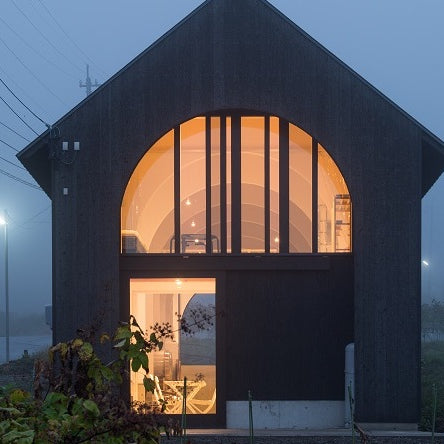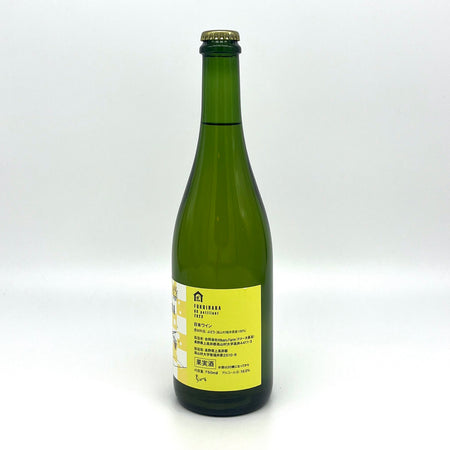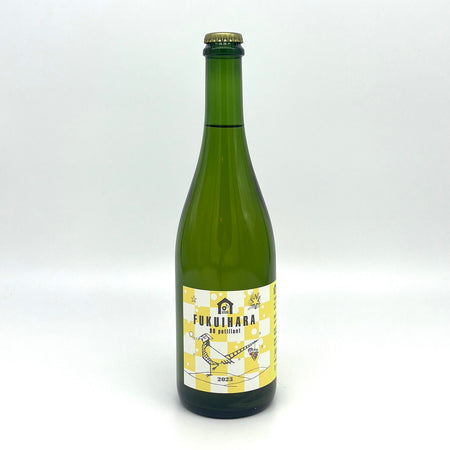Domaine Hase
Takayama Village, Nagano
People
Domaine Hase is a family-run winery established in 2017 in the Fukuihara area of Takayama Village in north-eastern Nagano. The owner Mr Mitsuhiro Hase previously worked for a major record company for about 20 years. At the time, he was in charge of publicity for artists and music, and had many opportunities to drink with people in the media industry on the job, which is where his passion for wine began.
In 2012, when he and his wife, who now runs the winery with him, were visiting wineries in Japan, they finally stopped at Villa d'Est Winery in Nagano. The Pinot Noir they tasted there shocked them, and they decided to start making wine.
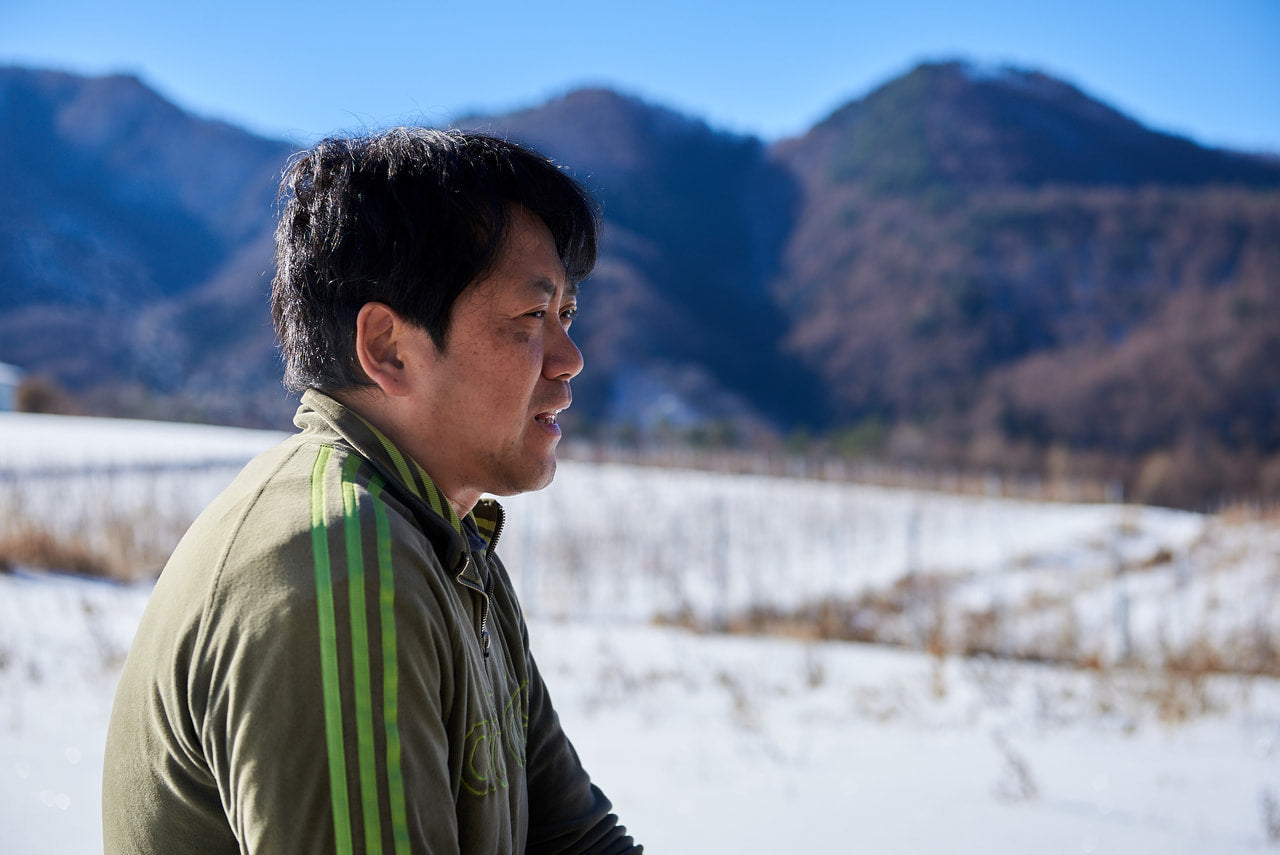
'Until then, I thought it would be difficult to make Pinot Noir wine in Japan. But after drinking that wine, I became convinced that it was possible to make wines in Japan that could compete with wines from Alsace and Burgundy' (Mitsuhiro).
Since then, he started interacting with Mr Toyoo Tamamura, owner of Villa d'Est winery, and trained at the winery only on weekends while he worked for the record company. The following year, 2013, he studied at a wine production academy run by Nagano Prefecture, and finally, in 2014, he left his job at the record company and moved to Takayama Village.
After moving to the village, he trained in viticulture under Mr Akio Sato, a contract grower for Château Mercian, a pioneer in Japanese wine. With little farming experience or know-how, Mitsuhiro learnt how to set up trellises and plant saplings there.
Later, in 2015, on Mr Tamamura's recommendation, he became a student of the first private wine academy in Japan, ARC-EN-VIGNE.
It was his encounters with the lecturers in the academy, particularly Mr Yukinori Oyamada of Domaine Oyamada and Mr and Mrs Sasaki of Norakura, that led Mitsuhiro to his current natural winemaking style. Until then, Mitsuhiro had thought that natural winemaking would be difficult in Japan, where it rains a lot.
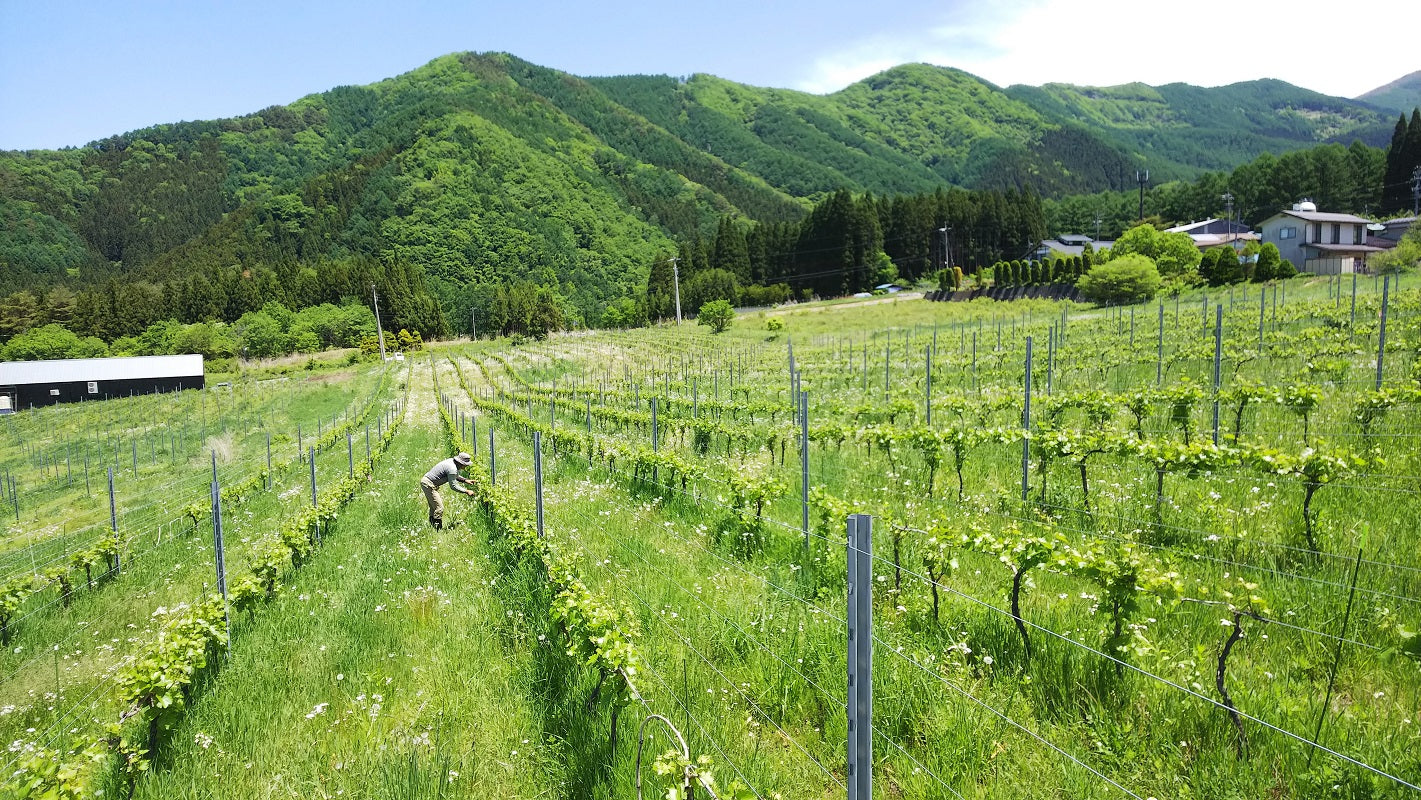
Mitsuhiro began looking for a location for his own winery in Nagano. He was looking for a cool climate where he could grow his favourite Pinot Noir and Chardonnay, or Alsace varieties, and a reasonable-sized vineyard in a single piece, rather than the smaller sectioned vineyards common in Japan, and the moment he saw his current plot in Fukuihara area in Takayama Village, he decided on it. And in 2017, Domaine Hase was established.
Vineyards
Takayama Village, located in the north-east of Nagano, is a beautiful farming village in the Shiga-highland Biosphere Reserve, with the Matsukawa Valley in Joshin’etsukogen National Park and the original landscape of a mountain village on its fan-shaped area. After entering the village, the road to Fukuihara area follows a winding path through the mountain forests, crossing a river on the way, when suddenly the sky and wide open land opens up, creating an overwhelming landscape that is hard to imagine from the surrounding mountain forests.
Domaine Hase is located at an altitude of 800 metres above sea level, with a 6 hectares vineyard and winery in such a spectacular landscape. Nagano, where the village is located, has the lowest annual rainfall in Japan, a large temperature difference between day and night, long hours of sunshine and well-drained soil, making it an ideal region for growing wine grapes.
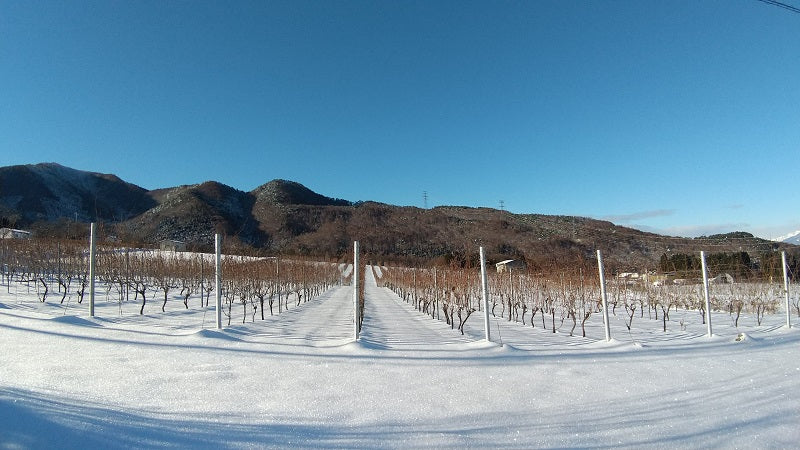
The soil is volcanic ash soil (andosols) with a surface deposit of approximately 70-80 cm of pitch-black humus, formed from plant and animal remains decomposed by microorganisms over tens of thousands of years.
'I feel that the memory and nutrition of the land, accumulated over the years, and the very complex microbiological environment, give the wines a soft but subtle nuance.' (Mitsuhiro)
Mitsuhiro is always looking for varieties that suit the area. The first vineyards settled were on east-facing slopes, as in Burgundy. This plot is planted with Pinot Noir, Pinot Gris, Pinot Blanc and Chardonnay (each from several clones), while German varieties are planted on the north-west-facing slopes, which receive longer autumn and winter sunshine. In total, 25 varieties are currently planted.
In addition to these varieties, they are planning to increase the number of varieties suited to the local climate, such as Riesling, Gewürztraminer, Pinot Gris, Savignan and Gamay, as well as Japanese varieties such as Muscat Bailey A and Shokoshi.
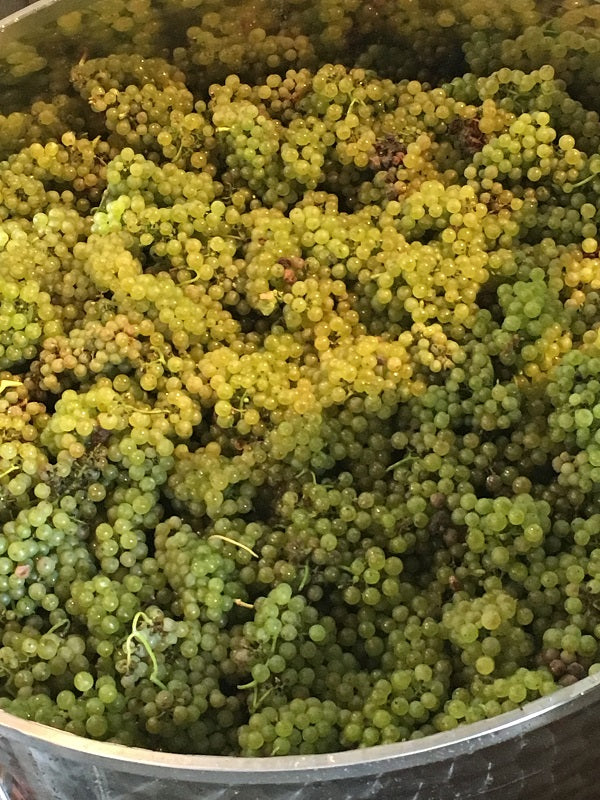
In addition to wines made from grapes grown on their own vineyards, the winery also has the FUKUIHARA series, made exclusively from grapes grown by contract farmers in Fukuihara area. These reflect the terroir of the land.
In viticulture, they try not to burden the environment, including the microorganisms surrounding the vineyards. No chemical pesticides, fertilisers or herbicides are used. The aim is to achieve sustainable farming through organic cultivation with an awareness of the cycle of life.
'I believe that this will lead to the creation of wines that resonate with the heart, just like the landscape of the Fukuihara' (Mitsuhiro).
Winemaking
Domaine Hase's aim is to produce wines that 'touch the heart'. Mitsuhiro believes that only grapes with high potential can produce truly great wines. Conversely, if you can grow grapes with high potential that match the environment and reflect the terroir, you can make a wine that resonates even without chaptalisation, acidification or other additives.
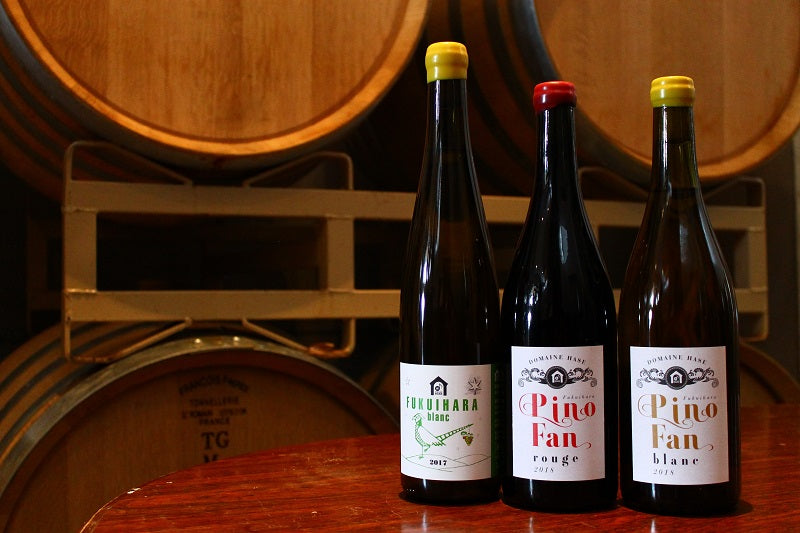
He believes that in order to maximise the hidden power of the grapes, viticulture and winemaking must be considered down to the microbiological level. That is why he has his winery right next to the vineyards in order to benefit from the natural environment, including microorganisms, in the cellar. From viticulture to winemaking, wine is made in the same environment.
In the winemaking process, in order to directly reflect these various natural elements, sulphite, which kills microorganisms, is not used during the preparation of the wine, which is fermented naturally by a complex microorganism population, and the aim is to make simple wine with as little human intervention as possible.
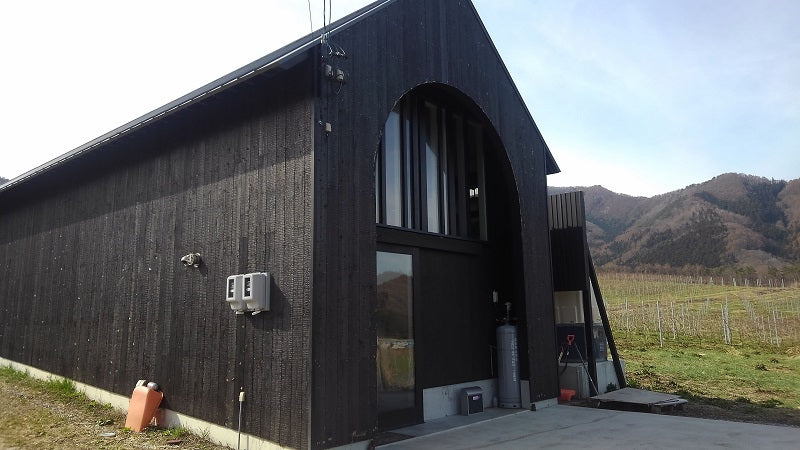
The winery was half-grounded to level the slope, which has a height difference of 2 metres. The semi-underground allows for gentle temperature control, as the temperature difference inside is now only plus or minus 2 to 3 degrees Celsius during the day, even when the outside air temperature is very cold.
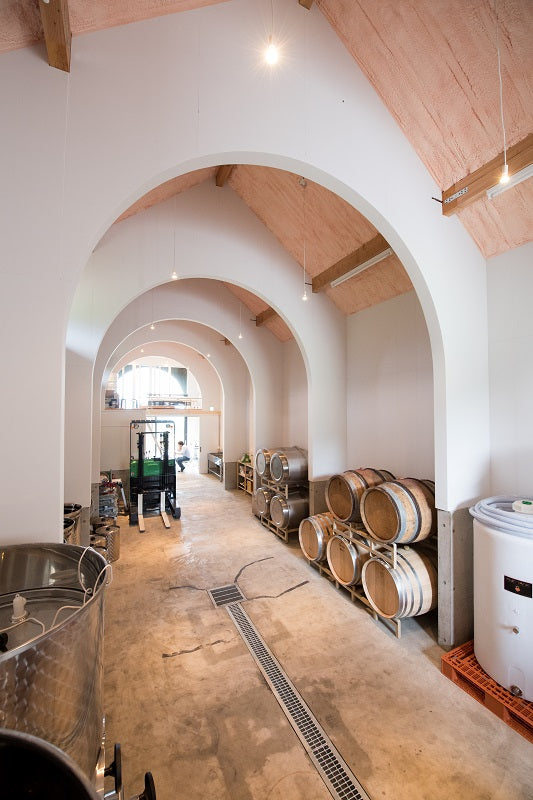
A gravity flow system has also been introduced, which takes advantage of the slope and places the crushing area on the upper level, allowing the must to move to the tanks without gravity and with less strain on the must.
The space is designed to be easy to use, with a straight line flow from field to truck, crushing and pressing, fermentation, storage and shipping, as well as a comfortable space that makes you want to come here every day, complete with air conditioning and high quality speakers.
'A building that is like a landmark in the landscape, where my ideals and the image of wine and wineries resonate with each other and radiate energy. My ideal was a building that would expand the imagination of visitors from far away and make them want to come back again' (Mitsuhiro).
Finally, Mitsuhiro talks about the appeal of Japanese wine and his ambition to expand into the Netherlands and Europe.
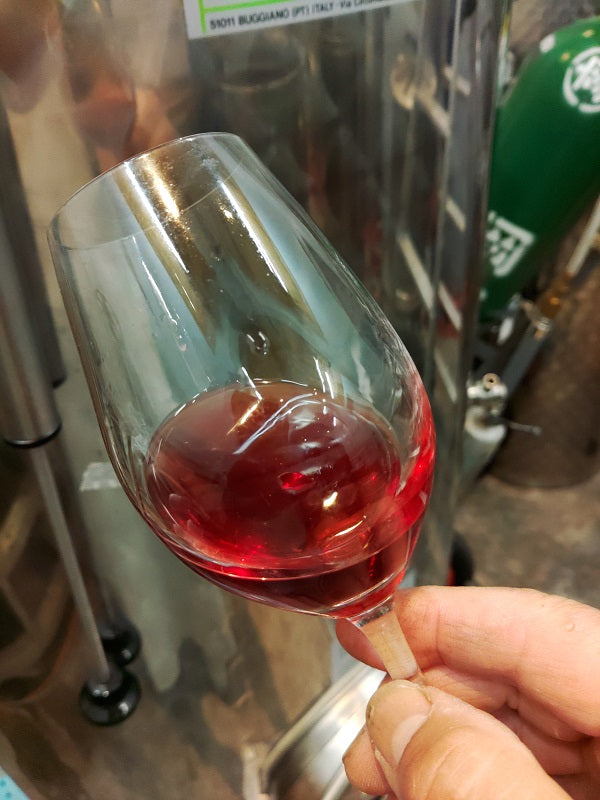
'Japanese wines are often light, but can be nourishing with many aromatic and flavour elements, depth and a dashi-like taste. Natural winemaking is very important for this. Of course, it goes very well with Japanese food and cuisine. If we can grow good grapes in good plots, with small bunches, by limiting the yield, I think it is possible to produce wines that have structure and strength with delicacy, and that can be world-class wines.'
'My role model for wine is Europe. I would like people from that home country to taste the wines of Fukuihara. I am interested in whether the wines of this land can be accepted in the world. Beyond that, I think it is important that the wines of this land, with its rich microbiological environment and reflecting the terroir, can be categorised as unique. I will always continue to think about how I can fulfil the potential of this land" (Mitsuhiro).

